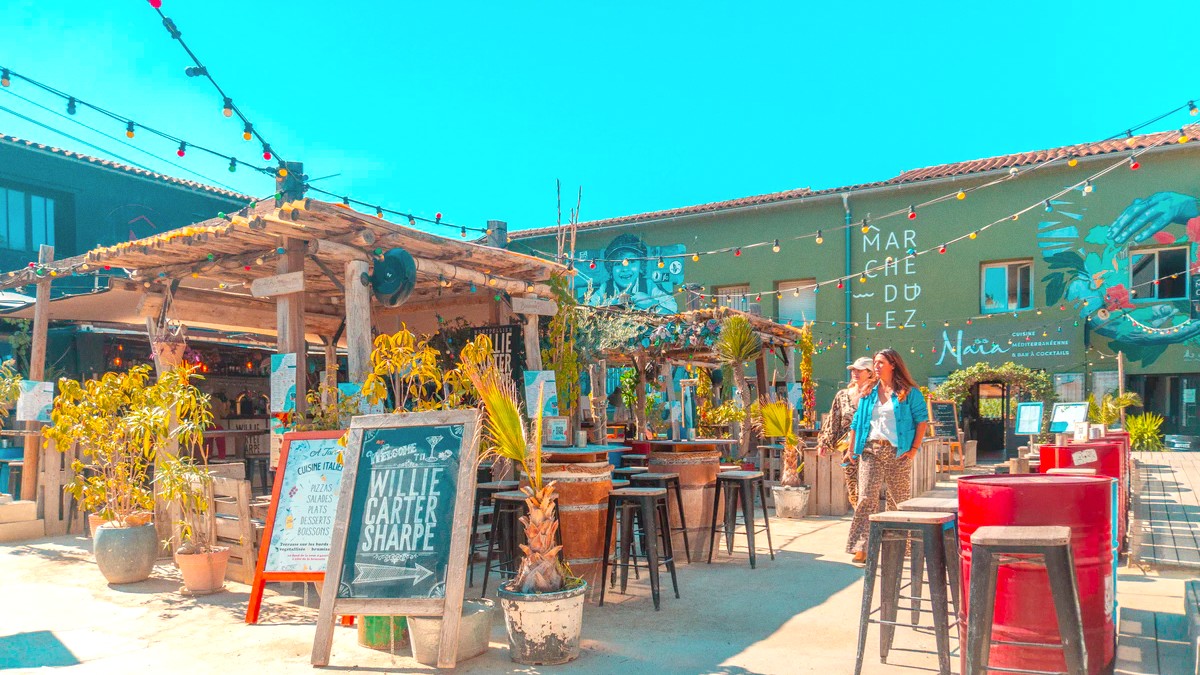
Languedoc Roussillon, France
Montpellier's cuisine is rooted in the Languedoc-Roussillon region (now Occitanie). It draws much influence from its Mediterranean climate and proximity to the sea. The flavors combine Provençal, Spanish, and Catalan cooking.
A strong focus rests on fresh, seasonal ingredients, olive oil, herbs (herbes de Provence), and garlic. The region has a long tradition of wine production, complementing local dishes.
Lunch (déjeuner) is typically 12:00 PM to 2:00 PM. Dinner (dîner) starts later, usually 7:00 PM or 7:30 PM, with peak dining around 8:00 PM or 9:00 PM. Many restaurants close between lunch and dinner.
Always greet staff with "Bonjour" and "Merci, au revoir." Wait to be seated. Bread accompanies meals; place it next to your plate. Tap water (une carafe d'eau) is free. Dining is often leisurely.
Breakfast (Petit Déjeuner) is light. Lunch (Déjeuner) often forms the main meal; many restaurants offer a "Plat du Jour" or "Formule." Dinner (Dîner) can be multi-course, specifically on weekends.
A savory, round pie from nearby Sète. It fills with octopus or squid in a spicy tomato sauce. Find it at bakeries and seafood restaurants.
A regional culinary icon.
A creamy emulsion of salt cod, olive oil, garlic, and sometimes potatoes. This classic Languedoc dish often comes warm with toast or as a gratin.
Comfort food from the region.
Small, round black candies, traditionally from honey and licorice. Said to be France's oldest candy, they make an unique local souvenir.
A historic sweet treat.
Find crêpes, galettes (savory pancakes), paninis, and sometimes local savory pastries at markets or small kiosks.
Try local wines (Pic Saint-Loup, Picpoul de Pinet), Pastis (anise-flavored aperitif), local craft beers, and non-alcoholic syrups mixed with water.
Montpellier includes Michelin-starred or Bib Gourmand restaurants, providing refined modern French and regional cuisine. Reservations are wise. Check current guides for the latest recommendations.
Numerous mid-range restaurants exist throughout the city, especially in the Ecusson. They offer traditional French bistros, Mediterranean cuisine, and various international options. Boulangeries and crêperies provide quick, affordable meals.
Markets like Les Arceaux or Halles Laissac offer prepared foods and ingredients for picnics. Montpellier's diverse population means a good selection of Italian, Asian, North African, and Lebanese restaurants.
Vegetarian options appear more frequently, especially in larger or modern establishments. Vegan options are fewer but growing. Look for "végétarien" or "végétalien" on menus.
The HappyCow app or website may locate dedicated establishments.
Awareness of gluten-free ("sans gluten") and other allergens is improving. It is advisable to learn French phrases and communicate clearly. Smaller, traditional restaurants may show less flexibility.
Online forums, dedicated apps, or pre-translated dietary cards (Allergy translation cards) prove highly useful.
Learn regional French cuisine hands-on.
Discover local specialties and hidden culinary gems.
Visit vineyards, olive groves, or oyster farms.
Check local calendars for events.
For special occasions, Montpellier's fine dining establishments provide a memorable experience. Book in advance for popular dates.
Consider a tasting menu for a full culinary journey.
Dining is often a leisurely affair. Do not expect rushed service; savor the experience. Service charges are part of the bill.
A small additional tip (rounding up, a few Euros) is a kind gesture for exceptional service.
Halal food is available, especially in neighborhoods with larger North African communities. Kosher options are more limited but may appear in specialized grocery stores or Jewish community centers.
Marché du Lez provides a contemporary take on a food market, combining dining with a social experience. It stays lively on weekends.
Opportunities exist in the surrounding region to visit vineyards for wine tastings.
Visit olive groves to learn about olive oil production and sample local varieties.
Visit local farms producing regional cheeses like Pélardon.
A dynamic, sprawling complex with food stalls, restaurants, and a street food market atmosphere. It stays notably lively on weekends.
A hub for modern culinary exploration and social gatherings.
Renovated indoor markets with fresh produce, butchers, fishmongers, and small eateries. Excellent for fresh goods and a local shopping experience.
Discover fresh ingredients and prepared foods.
Pair this creamy salt cod emulsion with a crisp white wine from the region, like Picpoul de Pinet, or a light rosé.
The savory, spicy notes of Tielle Sétoise pair well with a dry rosé wine from the Languedoc, or a local red wine with soft tannins.
This robust bull stew matches a strong, full-bodied red wine from the region, like a Faugères or Corbières.
Exploring Montpellier's food scene goes beyond eating; it's a cultural experience. Embrace the leisurely pace of French meals and the emphasis on fresh, seasonal ingredients.